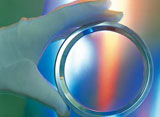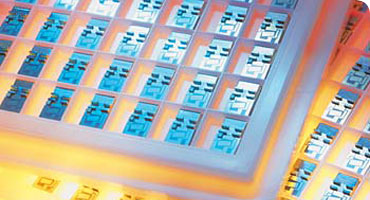Properties of diamonds
Diamonds can survive conditions that would destroy other materials and so they have many uses in science and industry. Natural diamonds are rare and very expensive so it hasn't been possible to make full use of their amazing natural properties until recently. Now we have the ability to grow synthetic diamond crystals and wafers, opening up whole new worlds of technology.
Diamonds have a range of unique properties:
- Diamond is the hardest known natural material on Earth.
- Diamond conducts heat 5 times faster than copper, which is why it feels cold to the touch.
- Pure diamond is the most transparent material known. It reflects visible light, ultra-violet light, and infrared light, and all the frequencies in between.
- Diamond can be an insulator or a conductor, so it can either allow electricity to pass through or block it.
- Diamond can survive intact in environments that will destroy other materials. It can survive severe physical, chemical and radioactive forces.
- If you place diamonds inside the human body they will not trigger an immune response.
Now we can make artificial diamonds, we can make better use of these properties in science and engineering. Here are some examples.
Surgery
Diamond blades on scalpels have an ultra-fine edge that can cut very precisely, which is important for surgery. Diamond also remains sharp for much longer than steel. As it cuts, it can transmit laser light, which allows it to cauterise the wound to control bleeding.
Telecommunications
Diamond cubes can allow several signals at once to pass along a cable, all at different wavelengths of light. This makes them useful in telecommunications. They can also withstand high-energy conditions and changes in temperature.
Heat spreaders
Heat passes through diamonds far more quickly than it passes through copper. This makes it useful as a heat spread in places where lots of heat is generated in a small space. Microelectronic devices are one example.
Windows

A diamond window
Diamond windows provide protection from extreme conditions in some scientific experiments that use substances like acidic liquids or molten plastics. Diamonds windows are also very transparent and so they allow infra-red measuring devices to monitor the substances safely from behind the window.
Health care
Diamond is made of carbon and so it is the ideal material to use in our carbon-based bodies. It will not wear away or trigger an immune response. Scientists are developing diamond implants that could help monitor health or take over the role of failing tissues. They are also dreaming of tiny diamond machines that one day might speed round the body making repairs.
Toolbox

In 2003 nearly 12,000 scientists from over 60 countries came to work at the Museum.
